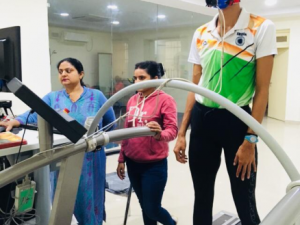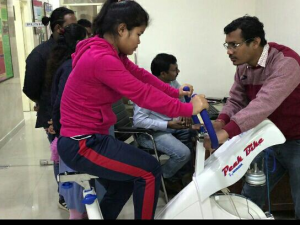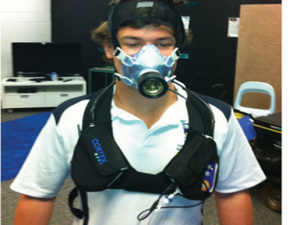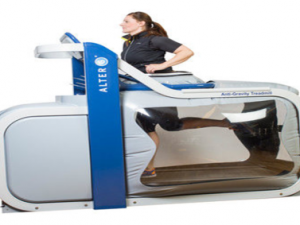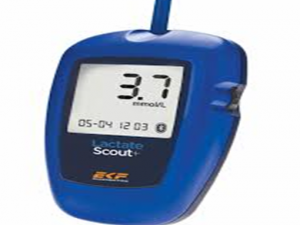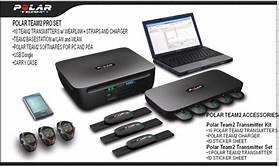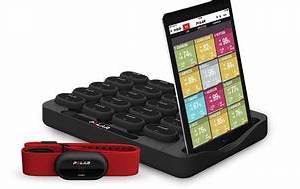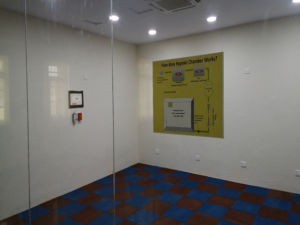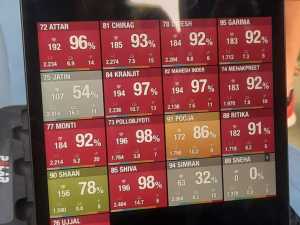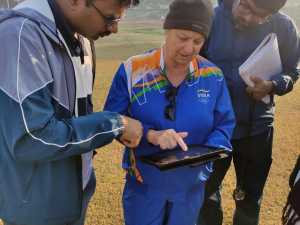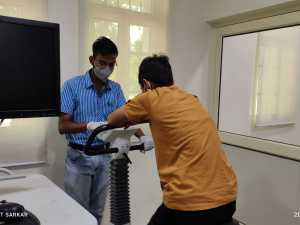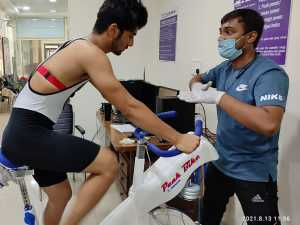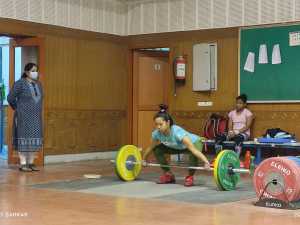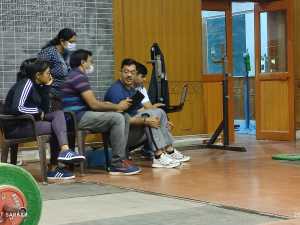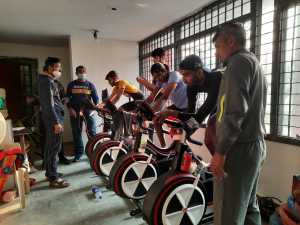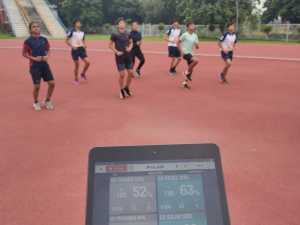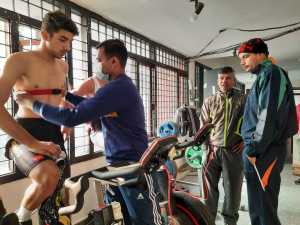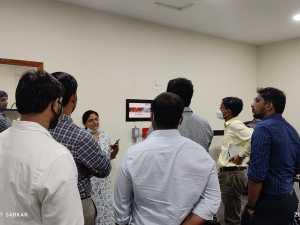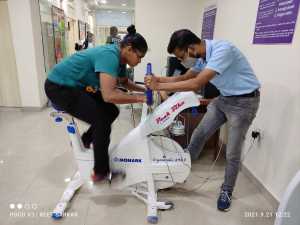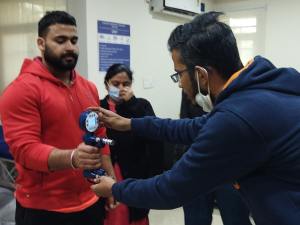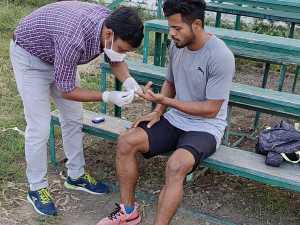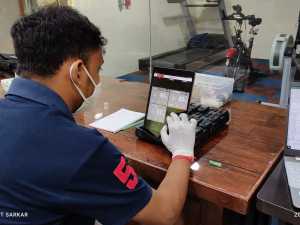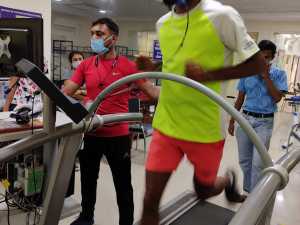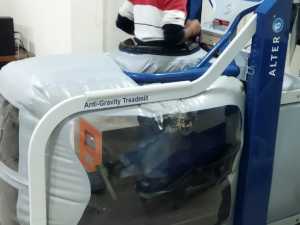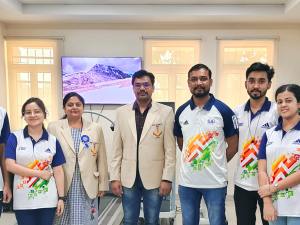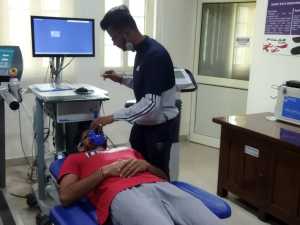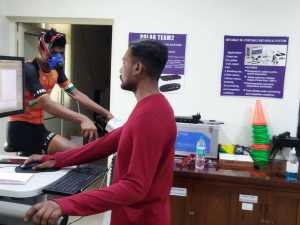MAIN OBJECTIVE IS TO SUPPORT
- Monitoring of Physiological performance variables of top sports persons of the country: TOPSAthletes, National Campers, SAI- NCOE, SAI- Training centre (STC).
- Phase wise Physiological testing, test analysis and test prescription advise
- Academic classes of different online and offline classes (MSc. Course, PG Diploma, Refresher Course, Diploma, Certificate Course etc.).
- Conduction of various knowledge development program, Online webinars, Pre-Conference workshop etc.
- Variable wise Physiological Norms creation for Indian subcontinent origin.
- Game wise Event specific testing Protocol formulation via Pilot study, Reliability and Validity work through prediction modelling.
- Quality Research Work in the field of Sports Science.
Focused physiological testing areas:
- Cardio-pulmonary fitness testing
- Physiological threshold (AT, VT, LT) monitoring
- Graded exercise testing (GXT) and submaximal testing
- Lung function (spirometry) testing
- Physical and physiological fitness battery testing and test prescription
- Lactate and Heart rate adaptive response checking
- Heart rate variability and cardiac recovery response
- Anaerobic power profiling
- Various muscular strength adoption measurement
- Field-based physiological performance monitoring
- Physical workload monitoring
- Hypoxic chamber-based high-altitude training simulations
Academics
- Master in Sports Coaching
- Post Graduate Diploma in Exercise Physiology
- Diploma in Sports Coaching
- Diploma in Sports Medicine
- Skill Development Courses
- Certificate Courses in Sports Coaching
- Orientation Course
- Refreshers Course
Publications:
- National publications: 12
- International publications: 15.
DEPARTMENT OF SPORTS PHYSIOLOGY
SCIENTIFIC EQUIPMENTS & UTILITY
| Sl. No. | Equipment | Measures/ Variables | Battery of tests/ Methods | 1 | Breath-by-Breath Metabolic Gas Analyser(COSMED CPET) |
|
Graded exercise test (GXT) in laboratory on treadmill or bicycle ergometer |
|---|---|---|---|
| 2 | Spirometry (lung function analysis) COSMED CPET |
|
Pulmonary Function Test (PFT) Test. |
| 3 | Uphill inclined Treadmill (COSMED uphill reversible-belt treadmill) |
|
Graded exercise test (GXT) |
| 4 | Anti-Gravity Treadmill (Alter-G) |
|
Rehabilitation purpose. |
| 5 | Bicycle Ergometer (COSMED Ergoselect) |
|
Graded exercise test (GXT), Ramp Test. |
| 6 | Lower body anaerobic peak bike (MONARK Wingate bike) |
|
Wingate test (WanT) |
| Metamax 3B Gas Analyser |
|
a) On field exercises (running, cycling, etc)
(b) Real time exercises monitoring at sea level as well as high altitude training (Hypoxic chamber training) (c) Graded exercise test (GXT) in laboratory on treadmill or bicycle ergometer |
|
| 7 | Hypoxic Chamber ~90M3 |
|
a) High Altitude training (i) Passive methods ( ~ 6 – 8 hrs/daily) (ii) Active methods ( ~ 1 – 2 hrs/daily) |
| 8 | Polar Team Pro (POLAR) heart rate sensors |
|
(a) Online monitoring during live match & real time training
(b) Online monitoring and offline data of lab based and field based physiological tests. |
| 9 | Lactate Scout (Portable Lactate Analyser) |
|
(a) Graded exercise test (GXT) on treadmill or bicycle ergometer in laboratory
(b) Incremental exercises in field |
| 10 | Portable field based scientific equipment | All physiological field-based tests | Beep test Yo-yo test RAST test Other essential tests |
Faculty Members
Mr. Tambi Medabala
(Scientific Officer)
Dr. Surojit Sarkar
(High Performance Analyst)
Dr. Neha Kakkar
(Scientific Assistant)
Mr. Soubhory Ganguly
(Performance Analyst)
Mr. Sourojeet Samanta
(Exercise physiologist)

